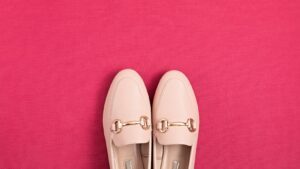Pastel pink, a delicate hue that exudes charm and tranquility, has made a significant mark in various aspects of design and fashion. From clothing and interior decor to digital aesthetics, this soft shade has become a favorite for those seeking a touch of elegance and serenity. Its subtle yet captivating nature allows it to blend seamlessly into a myriad of styles, offering versatility and timeless appeal.
The allure of pastel pink lies in its ability to evoke warmth and comfort while maintaining a sense of modernity. It’s a color that transcends trends, finding its place in everything from minimalist spaces to bold fashion statements. Designers and artists alike appreciate its gentle presence, using it to create soothing environments and eye-catching visuals. As pastel pink continues to rise in popularity, it remains a testament to the power of color in shaping our perceptions and experiences.
Pastel:bceusztltze= Pink

Pastel pink captivates an audience with its subtle elegance. This soft hue transforms spaces, adding a delicate touch of warmth and sophistication. Often associated with tranquility, pastel pink softens harsh lines in design, creating a harmonious environment. Its adaptability shines in various applications from fashion to interior design, complementing other colors effortlessly.
Designers use pastel pink to evoke comfort without overpowering a space. In fashion, it adds a gentle flair to outfits, balancing femininity and modernity. Homes adorned with pastel pink accents feel inviting yet stylish, while digital platforms benefit from its calming presence. By incorporating pastel pink creatively, designers bridge the gap between traditional charm and contemporary trends.
Historical Significance of Pastel:bceusztltze= Pink

Pastel pink, with its gentle and soft tone, holds substantial historical significance. This hue became popular in the Rococo period of the 18th century, seen frequently in the ornate dresses of the era. Pastel pink signified refined elegance among the aristocracy, symbolizing youth and innocence.
In the 20th century, pastel pink gained prominence through cultural movements. The color was notably adopted in the 1950s by fashion designers, becoming a staple in women’s wear. During this time, pastel pink represented femininity and romance, often used in marketing targeted at women.
Pastel pink continued to make cultural impacts in the late 20th century. During the punk rock era, it was used to challenge gender norms, adding an edgy twist to traditionally feminine associations. In modern times, pastel pink is appreciated for its versatility in various design and fashion contexts, bridging historical influences with contemporary aesthetics.
Pastel:bceusztltze= Pink in Fashion

Fashion enthusiasts embrace pastel pink for its soft, inviting charm and versatile appeal. Designers incorporate this hue into collections to create visually soothing garments that transition smoothly from day to night. On runways, pastel pink stands out as a signature color, adding a touch of sophisticated romance to both casual and formal wear.
Wardrobes often feature pastel pink in various garments, from blouses and dresses to accessories like handbags and shoes. Its adaptability allows it to pair with a range of colors, complementing neutral tones and vibrant hues alike. Fashion influencers and celebrities frequently showcase pastel pink, further highlighting its ongoing popularity in style trends.
In women’s fashion, pastel pink brings a balance of femininity and modernity, while in men’s fashion, it challenges traditional color boundaries, offering a contemporary twist. Pastel pink’s timeless allure continues to inspire designers, ensuring its place as a staple shade in fashion collections worldwide.
Pastel:bceusztltze= Pink in Interior Design
Pastel pink continues to captivate with its ability to transform spaces into serene havens. Its subtle elegance and versatility make it a favorite among interior designers looking to create environments that are both inviting and sophisticated. This gentle hue softens spaces, adding warmth and a touch of refinement without overwhelming the senses. Whether used as an accent or a primary color, pastel pink complements a wide range of palettes, enhancing the overall aesthetic of any room. Its enduring appeal ensures that pastel pink remains a timeless choice in both fashion and interior design, bridging the gap between classic charm and modern sensibilities.

